Filter by
Redox State as a Central Regulator of Plant-Cell Stress Responses
This book provides an up-to-date overview of redox signaling in plant cells and its key role in responses to different stresses. The chapters, which are original works or reviews, focus on redox signaling states; cellular tolerance under different biotic and abiotic stresses; cellular redox homeostasis as a central modulator; redox homeostasis and reactive oxygen species (ROS); redox balance in…
- Edition
- -
- ISBN/ISSN
- 978-3-319-44081-1
- Collation
- -
- Series Title
- -
- Call Number
- 572
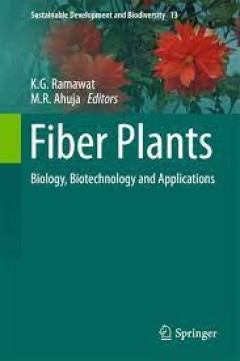
Fiber Plants Biology, Biotechnology and Applications
This book assesses the potential effects of biotechnological approaches, particularly genetic modification, on the present state of fiber crop cultivation and sustainable production. Leading international researchers discuss and explain how biotechnology can affect and solve problems in connection with fiber crops. The topics covered include biology, biotechnology, genomics and applications of …
- Edition
- -
- ISBN/ISSN
- 978-3-319-44570-0
- Collation
- XI, 258
- Series Title
- -
- Call Number
- -
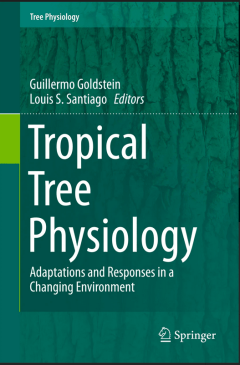
Tropical Tree Physiology
This book presents the latest information on tropical tree physiology, making it a valuable research tool for a wide variety of researchers. It is also of general interest to ecologists (e.g. Ecological Society of America; > 3000 or 4000 members at annual meeting), physiologists (e.g. American Society of Plant Biologists; > 2,000 members at annual meeting), and tropical biologists (e.g. Associa…
- Edition
- -
- ISBN/ISSN
- 978-3-319-27422-5
- Collation
- 54 b/w illustrations, 72 illustrations in colour
- Series Title
- -
- Call Number
- -

The Mechanistic Benefits of Microbial Symbionts
This volume summarizes recent advances in our understanding of the mechanisms that produce successful symbiotic partnerships involving microorganisms. It begins with a basic introduction to the nature of and mechanistic benefits derived from symbiotic associations. Taking that background knowledge as the starting point, the next sections include chapters that examine representative examples of …
- Edition
- -
- ISBN/ISSN
- 978-3-319-28068-4
- Collation
- XII, 315
- Series Title
- Advances in Environmental Microbiology
- Call Number
- -
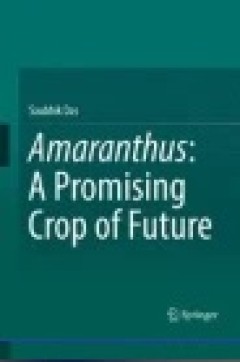
Amaranthus: A Promising Crop of Future
This book serves the larger community of plant researchers working on the taxonomy, species delimitation, phylogeny, and biogeography of pseudo-cereals, with a special emphasis on amaranths. It also provides extensive information on the nutritive value of underutilized pseudo-cereals, the goal being to broaden the vegetable list. Amaranthus is a cosmopolitan genus of annual or short-lived pe…
- Edition
- Ed. 1
- ISBN/ISSN
- 978-981-10-1469-7
- Collation
- IX, 208
- Series Title
- -
- Call Number
- 630 DAS a
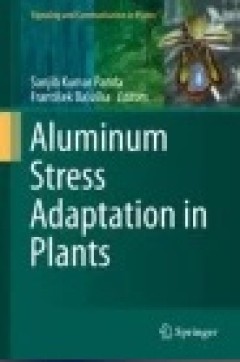
Aluminum Stress Adaptation in Plants
This book is an overview of our current understanding of aluminium toxicity and tolerance in plants. It covers all relevant aspects from molecular and cellular biology, to genetic approaches, root biology and plant physiology. The contribution of arbuscular mycorrhizal fungi to alleviating aluminium toxicity is also discussed. Over 40% of total agricultural land resources are acidic in nature, …
- Edition
- Ed. 1
- ISBN/ISSN
- 978-3-319-19968-9
- Collation
- IX, 274
- Series Title
- Signaling and Communication in Plants
- Call Number
- 630 ALU a

Alternaria Diseases of Crucifers: Biology, Ecology and Disease Management
This book deals with the various aspects viz., the disease, geographical distribution, symptoms on different hosts, host range, yield losses, and disease assessment method, while detailed description on pathogen include taxonomic position, phylogeny, variability, sporulation, perpetuation, and spore germination, host-parasite interactions in the form of seed infection, disease cycle, process of…
- Edition
- Ed. 1
- ISBN/ISSN
- 978-981-10-0021-8
- Collation
- XXXVII, 299
- Series Title
- -
- Call Number
- 630 SAH a
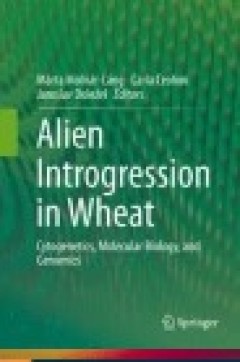
Alien Introgression in Wheat: Cytogenetics, Molecular Biology, and Genomics
This book provides an overview of the latest advancements in the field of alien introgression in wheat. The discovery and wide application of molecular genetic techniques including molecular markers, in situ hybridization, and genomics has led to a surge in interspecific and intergeneric hybridization in recent decades. The work begins with the taxonomy of cereals, especially of those species w…
- Edition
- Ed. 1
- ISBN/ISSN
- 978-3-319-23494-6
- Collation
- X, 385
- Series Title
- -
- Call Number
- 581.15 ALI a

Algae-Based Biopharmaceuticals
This book constitutes a key reference on the use of algae in the biopharmaceuticals production field; providing an updated outlook on the achievements accomplished thus far and transmitting a prospective view for this biotechnological application. This book provides a detailed description of the technology as well as an updated outlook of the strides achieved thus far in the field of algae-b…
- Edition
- Ed. 1
- ISBN/ISSN
- 978-3-319-32232-2
- Collation
- X, 166
- Series Title
- -
- Call Number
- 615.4 ROS a

Hemangiomas and Vascular Malformations: An Atlas of Diagnosis and Treatment
Since the first edition of this book was published, much new knowledge has been gained on hemangiomas and vascular malformations. This revised and updated second edition, written by worldwide leaders in the field, fully reflects this progress. Important improvements in the treatment of hemangiomas are reviewed, including the use of beta-blockers and other medical therapies as well as advance…
- Edition
- -
- ISBN/ISSN
- 978-88-470-5672-5
- Collation
- XXIII, 485
- Series Title
- -
- Call Number
- 570 HEA
 Computer Science, Information & General Works
Computer Science, Information & General Works  Philosophy & Psychology
Philosophy & Psychology  Religion
Religion  Social Sciences
Social Sciences  Language
Language  Pure Science
Pure Science  Applied Sciences
Applied Sciences  Art & Recreation
Art & Recreation  Literature
Literature  History & Geography
History & Geography